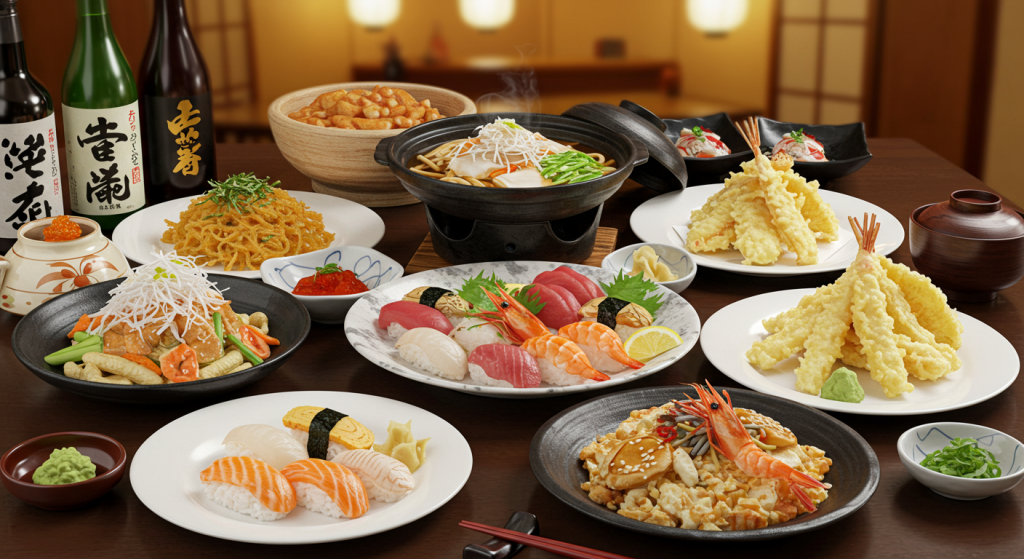
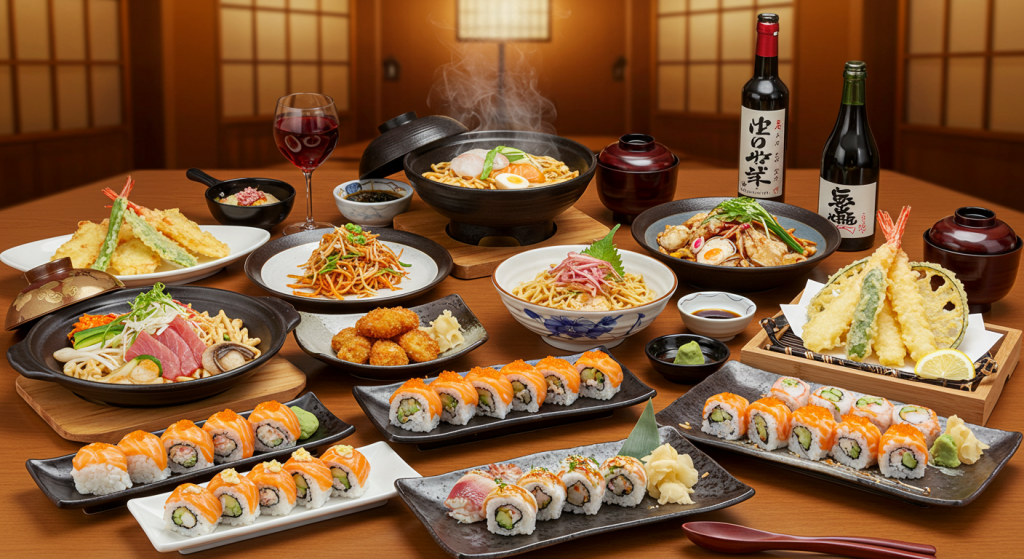
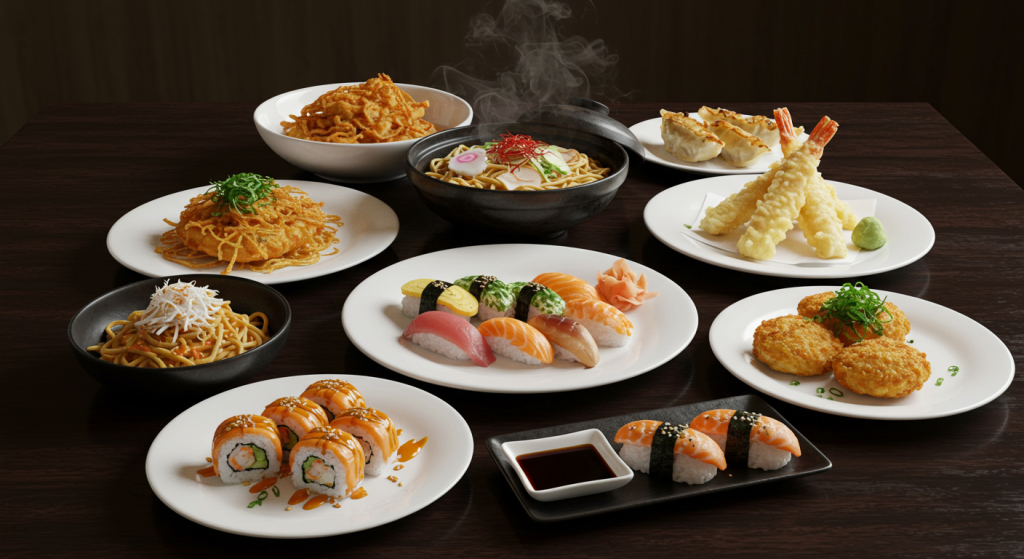
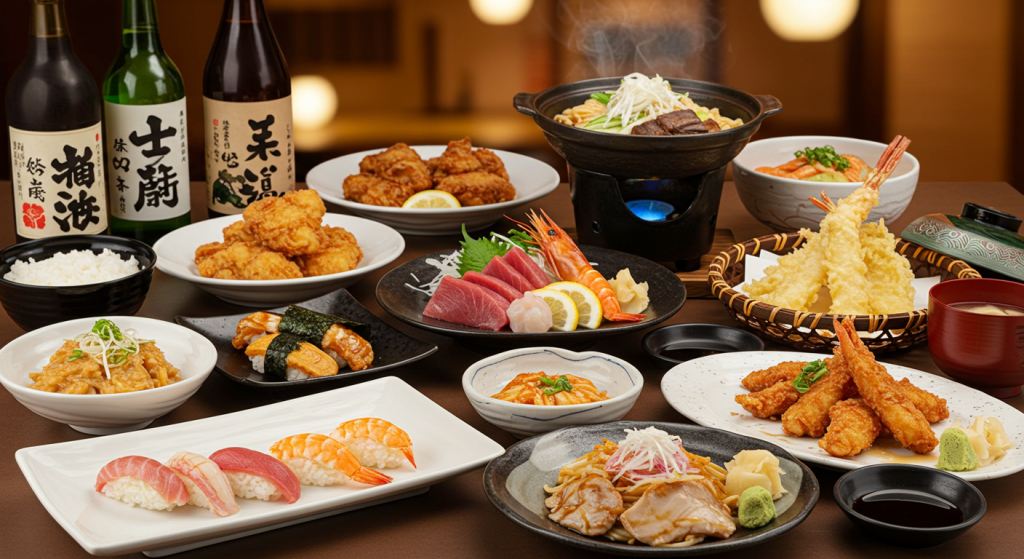
Japanese food, a harmonious blend of flavor, texture, and presentation, is a culinary art that reflects the country’s rich culture and history. Renowned worldwide, it captures the essence of Japan’s philosophy of respect for nature and the seasons, showcased beautifully through its diverse dishes.
At the heart of Japanese cuisine is rice, a staple that has been cultivated for thousands of years. Most meals revolve around rice, with varieties such as white rice, sticky rice, and even rice balls (onigiri) serving as core elements. Accompanying rice are a variety of dishes that offer a balance of flavors, essential for the traditional Japanese dining experience. One fundamental aspect is the emphasis on freshness and seasonal ingredients, often seen in popular dishes in Japan.
Sushi stands out as one of the most recognized forms of Japanese food globally. It comes in various forms, including nigiri (hand-formed sushi), maki (rolls), and sashimi (sliced raw fish), each prepared with meticulous care. Traditional sushi chefs train for years to perfect their craft, understanding how to balance flavors from vinegar-seasoned rice to the freshest seafood. Each region in Japan boasts unique sushi styles, from the vibrant nigiri of Tokyo to the delicate flavors of Osaka-style sushi.
Another iconic dish is ramen, a flavorful noodle soup that has gained immense popularity. Originating from Chinese cuisine, ramen has evolved to become distinctly Japanese, with regional variations such as Tonkotsu (pork bone broth) from Fukuoka, Shoyu (soy sauce) from Tokyo, and Miso ramen from Hokkaido. Each bowl is a symphony of flavors, crafted with care, showcasing the culinary diversity within Japan.
Japanese cuisine also focuses on seasonal dishes, such as “kaiseki,” a traditional multi-course dining experience that highlights seasonal ingredients and exquisite presentation. This meal focuses on small portions, providing a wide range of tastes and textures, ensuring a feast for the senses. Kaiseki epitomizes the Japanese philosophy of “umami,” the pleasant savory taste that enhances dishes and is often found in ingredients like miso, seaweed, and fermented products.
Donburi, another beloved category of Japanese food, features rice bowls topped with a variety of ingredients. Popular choices include Gyudon (beef bowl), Katsudon (pork cutlet), and Unadon (grilled eel), each delivering a comforting meal that showcases the versatility of Japanese cooking.
Street food plays a significant role in Japan’s food culture, with vibrant markets showcasing stalls selling Takoyaki (octopus balls), Okonomiyaki (savory pancakes), and Yakitori (grilled chicken skewers). These quick bites capture the essence of communal dining, with people enjoying food together in lively settings.
No discussion of Japanese cuisine would be complete without mentioning the delightful array of desserts. Traditional sweets, or “wagashi,” are often made with ingredients like mochi, red bean paste, and seasonal fruits. Desserts are often served with matcha (green tea), which itself is a significant part of Japanese culture, celebrated for its health benefits and ceremonial use.
In conclusion, Japanese food represents much more than sustenance; it embodies a cultural narrative that values seasons, craftsmanship, and the aesthetic of presentation. With its robust flavors, emphasis on freshness, and rich traditions, Japanese cuisine continues to inspire and delight food enthusiasts around the world.
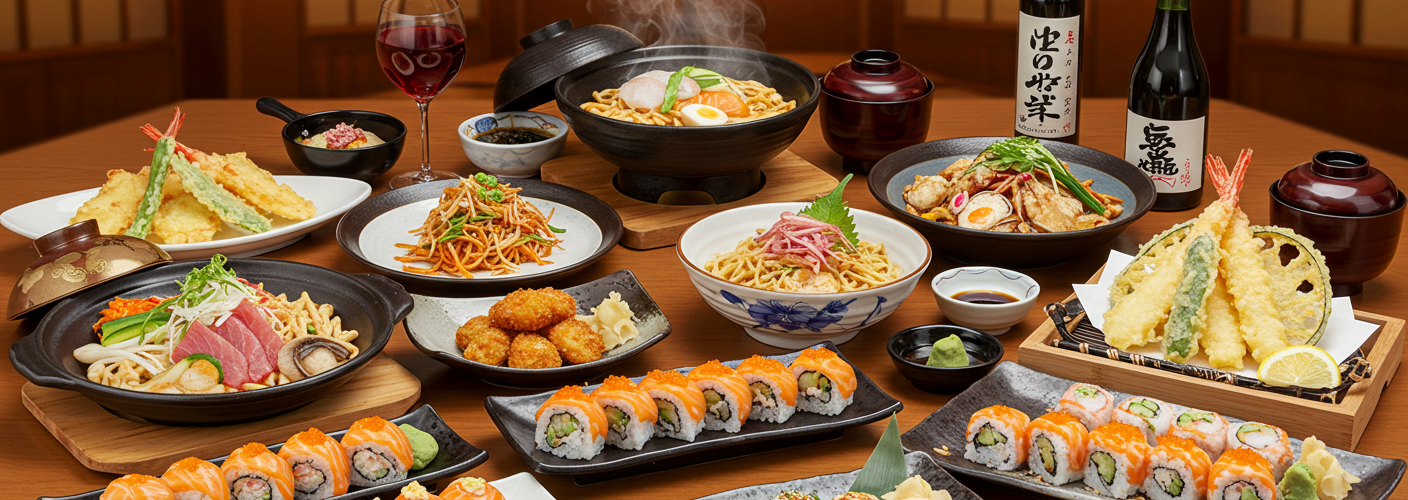



Add comment